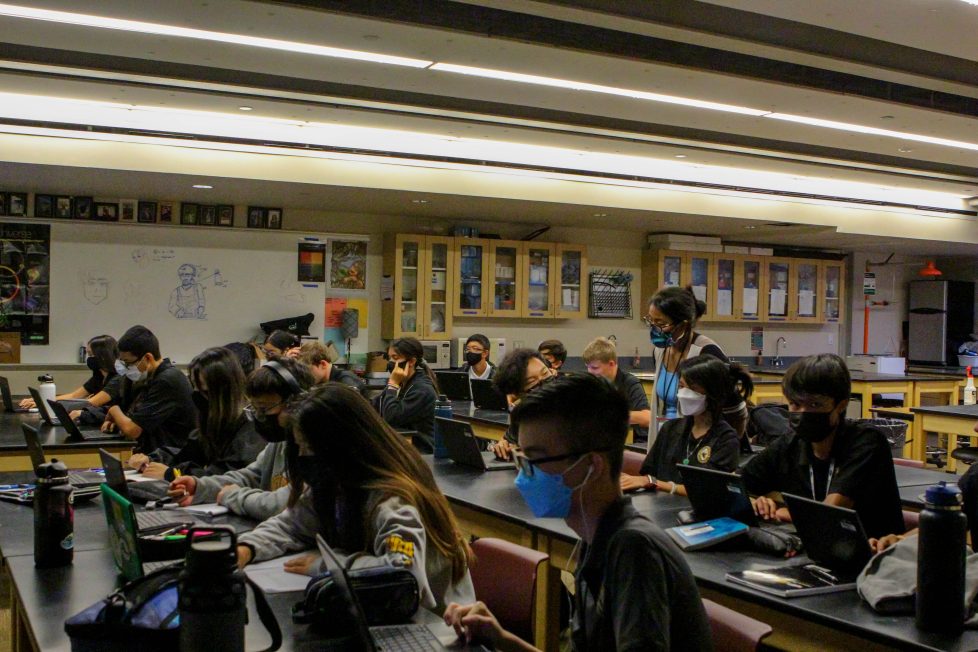Freshmen Take First Steps


“It’s very stressful,” said freshman Vivien Wong. “There’s a lot more going on here than in middle school,” stated classmate Sienna Lamblack, who’s new to HBA. The high school campus is significantly more crowded, as it hosts double the population of the middle school. Nadia Skorobagatko-Alvorson, another freshman, noted that “the hallways and the lunch line are really chaotic, but the classes are a lot more interesting [than middle school].” The increased workload has been another tricky adjustment. “Managing my time and making sure I complete all my homework [has been a challenge],” said freshman Zoë Naso.
The faculty advisors for the freshmen class expect students to undergo a time of transition and adjustment during the start of the year. “The beginning of the week was tough with the schedules changing every day, and [they had to] figure out the best route from class to class,” advisor Juri Yamashita observed. Fellow advisors Christopher Barnhart and Garrett Omoto also weighed in. Barnhart said, “The freshmen are naturally unsure of their surroundings and are working to find out how they fit into the fabric of the school,” while Omoto added, “New students have to adjust to the school environment and culture, and returning students need to adjust because they went from the top of their campus back down to the bottom.” Changing social dynamics can also be stormy waters to sail through: In middle school, students had the same people in all their classes, a system that isn’t instituted at the high school.
A few days before the school year began, the class of 2026 attended an orientation, which gave them an opportunity to socialize with peers and teachers. In addition, Barnhart thought the event was a helpful way to get students acquainted with the new campus. Naso said, “I felt very secure and welcomed there. It was fun to meet upperclassmen and our fellow classmates. The high school campus is much bigger and more confusing than the other campuses, but orientation helped me get used to it.” The schedule included a campus tour, icebreakers, time in homerooms, and dinner. “All the activities were fun, and I liked being able to see my new homeroom,” Katie Fong said. But for other students, orientation wasn’t as enjoyable. “I felt like it wasn’t necessary,” Skotobagatko-Halvorson admitted. “We didn’t really do anything that particularly helped me, but it was nothing bad. It was just so long.” Wong added, “[It] was a little boring.”
Having seen many groups of freshmen come through their classrooms, advisors have some suggestions to offer to the class of 2026. Omoto said, “Join a club or a sport in order to make new friends and learn something new.” Barnhart added, “Don’t judge an activity or class based on what those around you say. Try out new things and go outside of your comfort zone. You’ll find opportunities that you never knew were out there, and you won’t miss out on great experiences.” Advisor Alexandra Taylor emphasized the importance of seeking support if students are struggling academically. “Ask teachers questions, and take advantage of [Study Labs] to go get help right away,” she said. Yamashita agreed, adding, “Make sure you ask the teacher to meet with you during [Study Labs] before you leave class, and check MyEagle at the beginning of the day to see what your schedule looks like.”
Despite the chaos of the first weeks of school, Naso is excited and hopeful for the rest of the year. She said, “I enjoy having bigger and better lockers, more time to do work in class, amazing teachers, new people, more freedom, and more ways to express myself. I love it all!”
